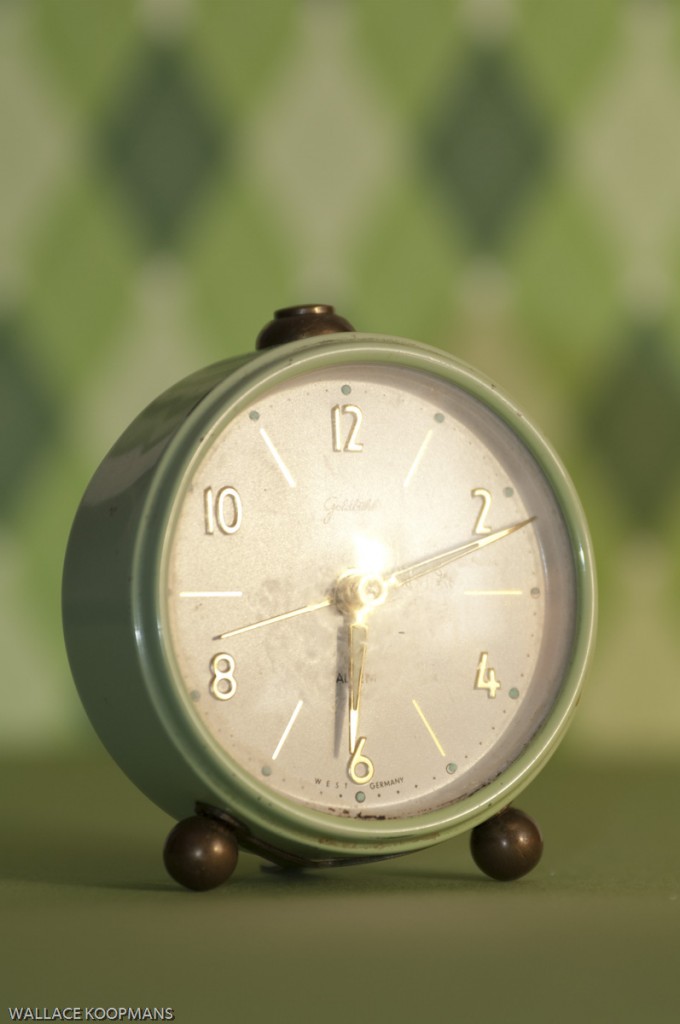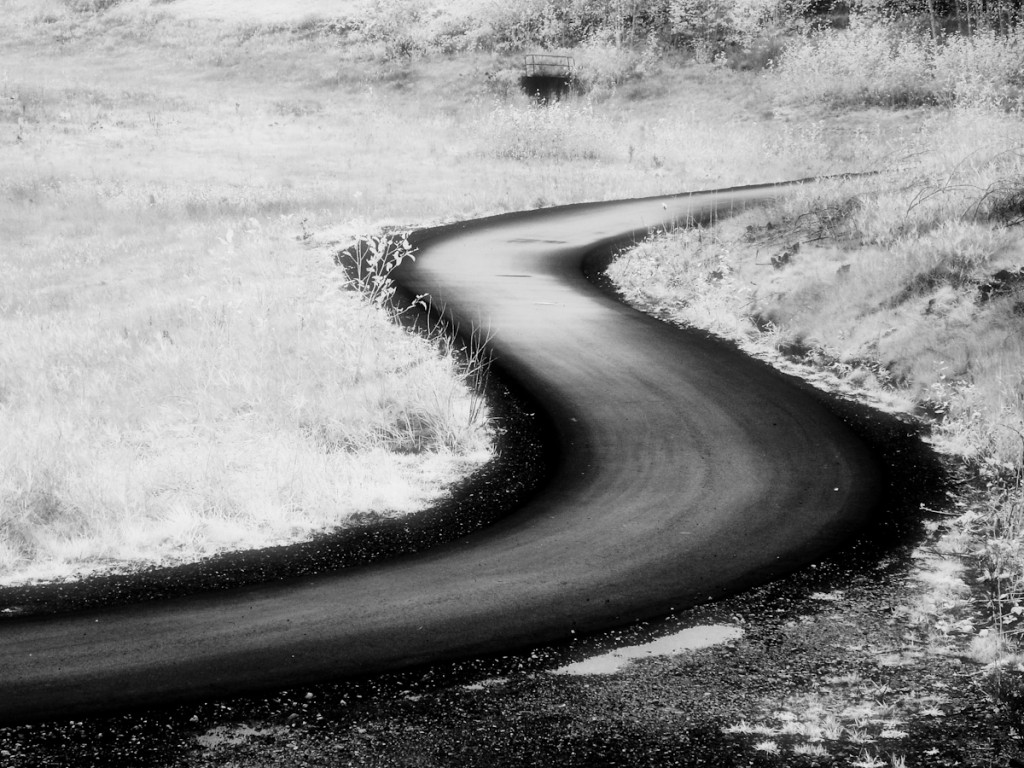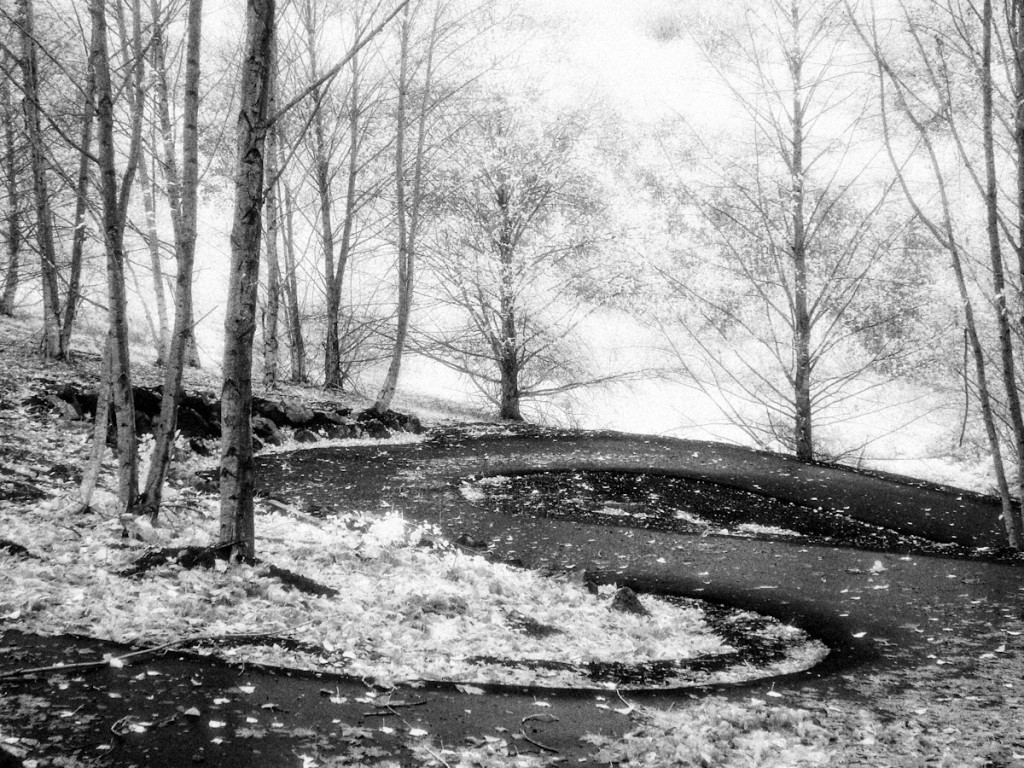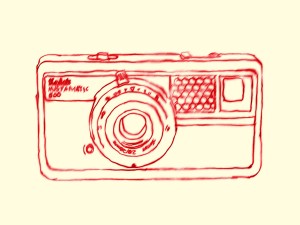Nov
9
2009
Colours that are analogous, such as those that lie next to each other on a colour wheel, or are generally neutral can be made more harmonious through tone. What is tone? If you think of the colours in an image in terms of black and white the value of that color or how dark or light it is, is it’s tonal value. You can see this in the histogram for this image, all the colours fall within the middle range or middle key. There is a danger that an image may be static or flat when all the values are so similar and when painting one would likely add something to offset this. However, the intent of this image is to evoke the feeling of a bright warm morning and the harmony of the tones and colours helps produce this.


The setup
Creating this image was done by placing the clock on a piece of foam-core. This was in front of a piece of paper which was used to mimic wallpaper and was selected to compliment the clock. A single flash with a gold translucent material was aimed at another piece of foam-core which would then give an illusion of a window in the reflection of the face of the clock. A word of advice, check the time on a clock if your trying to represent a particular time. Initially I must have been in the high arctic because I had morning light at 2:42 AM. So this one is afternoon light, problem solved.

Another variation

no comments | posted in Composition, Photography
Nov
8
2009
I went for a walk today with my Sony DSC-V3 which I use mostly for infrared photography. There are software filters that purport to giving an IR effect to photo’s but really they are still manipulating the visible light that was captured. Here is a scene shot in colour and IR as well as a version created in Photoshop from the colour photo to mimic Kodak HIE. I obviously prefer the last one, the actual IR shot or I wouldn’t continue to use the camera in this way.



The actual method is to set the camera on night shot mode, which internally moves an IR blocking filter out of the imaging path. This allows both Infrared light and visible light to reach the sensor. The visible light however is blocked by a Rodenstock RG715 filter that as it’s name suggests cuts off light transmission bellow 715 nanometers. A ND8 filter is also used to cut down on the amount of light reaching the sensor. These filters are held in front of the camera in an assemblage of adapters and filters.
Here are some more IR pictures from today.






And This last image which came about when I pointed the camera at the huge furnace in the sky while not in nightshot mode.

1 comment | posted in Photography, Processing
Nov
7
2009
I’ve been using my graphics tablet mostly for photo editing but am now giving sketching with it a try. I can see that looking at the screen while drawing is very different from drawing on paper where the mark is created at the point you are looking at. My technique will need more work and as yet I haven’t found the settings which mimic a pen adequately.

no comments | posted in Cameras, Drawings
Nov
5
2009
Having recently received some B&W negatives from the lab, I started to think about other photo’s I’ve taken digitally and processed as B&W’s, either at the time of capture or when importing them through Lightroom. So I looked through the images from our trip in August and selected some of those. I feel that for these pictures colour adds nothing, everything that needs to be said is conveyed monochromatically.
no comments | posted in Photography
Nov
4
2009
Here are three recent additions to my growing impromptu photo series of boarded up windows and decaying structures. Why impromptu? I haven’t been seeking these images purposefully but do seem to be attracted to the look and mood they create.


 I distinctly like this last image which to me is like a minimalist painting, with the small patch of what is presumably whitewash, protected from erosion by some unknown sign that is no longer there. What did it say and for how long?
I distinctly like this last image which to me is like a minimalist painting, with the small patch of what is presumably whitewash, protected from erosion by some unknown sign that is no longer there. What did it say and for how long?
These were all shot with a Yashica T AF which has a Carl Zeiss Tessar 3.5/35 T* lens. I am very impressed with the sharpness and clarity of this lens but will need to do some more testing as the camera appears to not focus properly at infinity. However, considering I bought it and shot with it without even taking the price sticker off I will give it the benefit of doubt and shoot another roll.
no comments | posted in Composition, Photography































